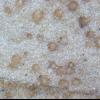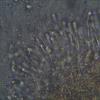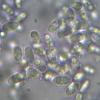
19-06-2011 10:52
Bonjour à tous,Voici un coelomycète à acervules

11-06-2011 14:18
Bas-marais acide, Grande Fange de Bihain, Haute Ar

16-06-2011 18:41
Même site, haute Ardenne. Sur gaines pourrissante

14-06-2011 12:51
Même site. Il y en a, des espèces, sur Typha.Apo

05-06-2011 20:55
 Raúl Tena Lahoz
Raúl Tena Lahoz
Hi to all!I´m testing the changes (bravo!) and wa

12-06-2011 20:06
 Michel Hairaud
Michel Hairaud
Bonjour,Nous remercions les participants de Mella

08-06-2011 20:21
Hi to all:Do you know this Nectria, Calonectria (?

07-06-2011 13:23
 Yatsiuk Iryna
Yatsiuk Iryna
Hello, Forum! I have 2 findings of Gyromitra, col
Coelomycète blanchâtre sur Hedera
Luc Bailly,
19-06-2011 10:52
Voici un coelomycète à acervules à la face inférieure d'une feuille morte (feuille entière d'un rameau florifère), en colonies, en compagnie de Trochila craterium. Forêt calcaire au pied d'une érablière de ravin.
Acervules blêmes, en petites cloques de l'ordre d' 1/4 mm. Pas de tache de nécrose.
Conidiophores hyalins, guttulés, 9-20 x 1.7-3.5 µ
Conidies hyalines, huile = 4-5, guttules de taille et nombre variable, souvent 2, accompagnées de guttules plus petites, parfois 1 seule guttule, pafois beaucoup plus; guttules très réfringentes. Taille des conidies: 7-9.5 x 3.5-4.5 µ.
C'est un champignon que je rencontre cà et là au printemps.
Quelqu'un aurait-il une idée?
Amitiés - LUC.



